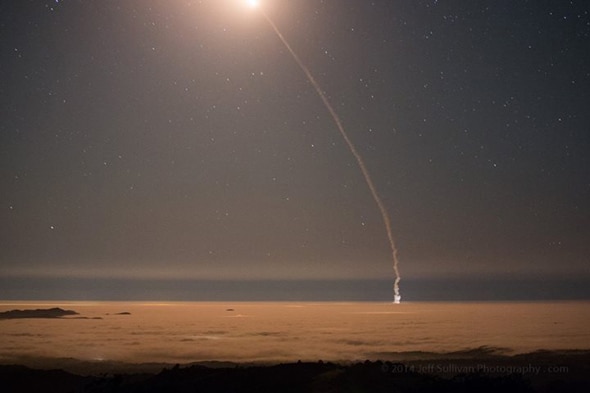Create a free profile to get unlimited access to exclusive videos, sweepstakes, and more!
NASA Launches a New Eye on Carbon Dioxide

On Wednesday, July 2, 2014, NASA launched a new satellite into orbit: The Orbiting Carbon Observatory-2*, designed to study atmospheric carbon dioxide. OCO-2 will be able to measure the levels of CO2 in our air with incredible accuracy and on very small regional scales, something that’s never been able to be done before.
Carbon dioxide is a greenhouse gas: It lets visible light from the Sun pass through the air to heat the Earth, but it absorbs some of the infrared light the Earth emits as it warms. This traps a small but extra amount of heat in the Earth’s air, causing global warming. There are other greenhouse gases, like methane and water vapor, but in general over time they stay constant; humans dump a huge amount of extra CO2 into the air—30 billion tons per year; yes, that’s billion with a b—and it’s this extra amount that’s causing us so much grief. The level of CO2 in our atmosphere is now more than 140 percent of where it was at the beginning of the industrial age, and this is what’s causing the sharp and quite alarming jump in global temperatures over the past century or so.
NASA is very concerned with measuring global warming and the incipient change in our climate, and that’s why OCO-2 was launched. It will take an astonishing 24 measurements every second, getting more than 1 million observations per day. It’s very sensitive to cloud cover (which can compromise the measurements) so it should get about 100,000 usable observations every day in its 3-square-kilometer field of view. That’s an amazingly high resolution both in time and space, and will give us an excellent view of the sources and sinks of CO2 over the planet.
The launch was attended by photographers Jeff Sullivan and Lori Hibbett, who got fantastic shots of it. Sullivan created a lovely time-lapse video of the night:
I’m very pleased this satellite is on the job. Global warming may be the single biggest immediate threat humanity faces, and there’s still much to learn about how it works, what effects it will have, and what we can do to stop or at least minimize its effects.
My congratulations to NASA and to JPL, and to the entire OCO-2 team. Let’s hope this will be another big step in helping us save our future.
*The first OCO was lost in a launch failure in 2009; it didn’t achieve orbit and burned up over the Indian Ocean.
Correction, Aug. 9, 2014: This post originally misstated that carbon dioxide in the air had increased by 150 percent since the start of the industrial age. It has increased by 143 percent.


























